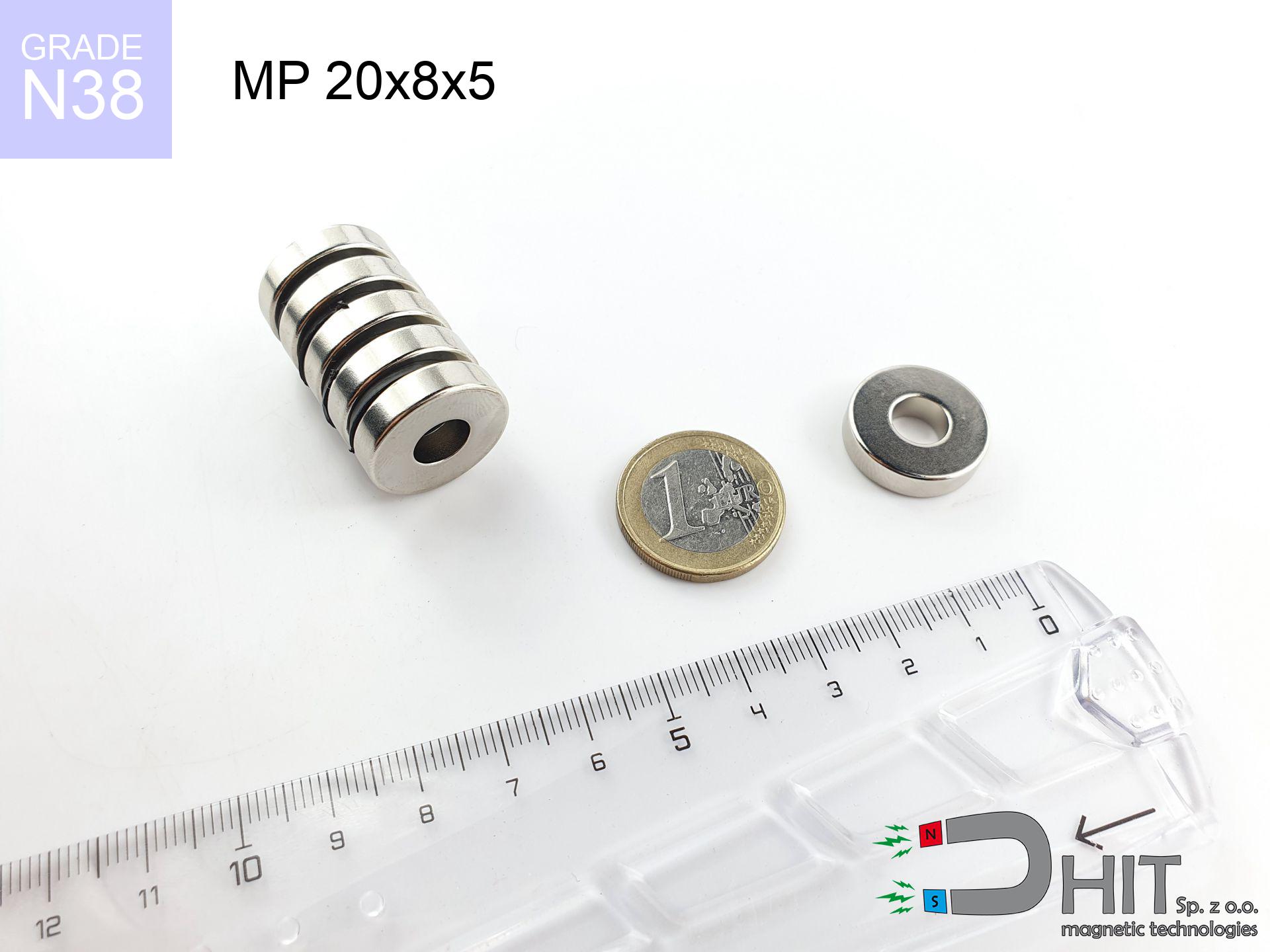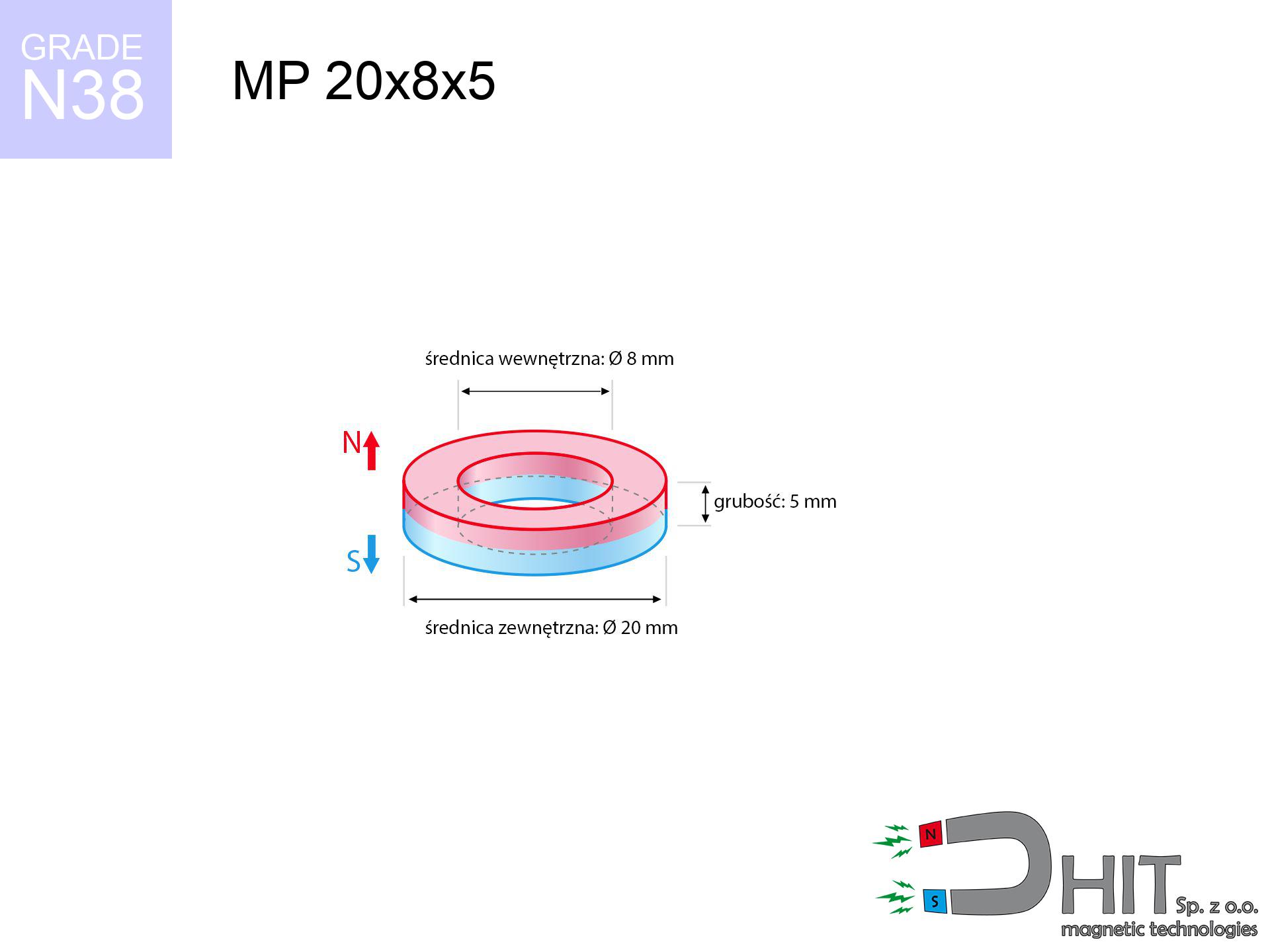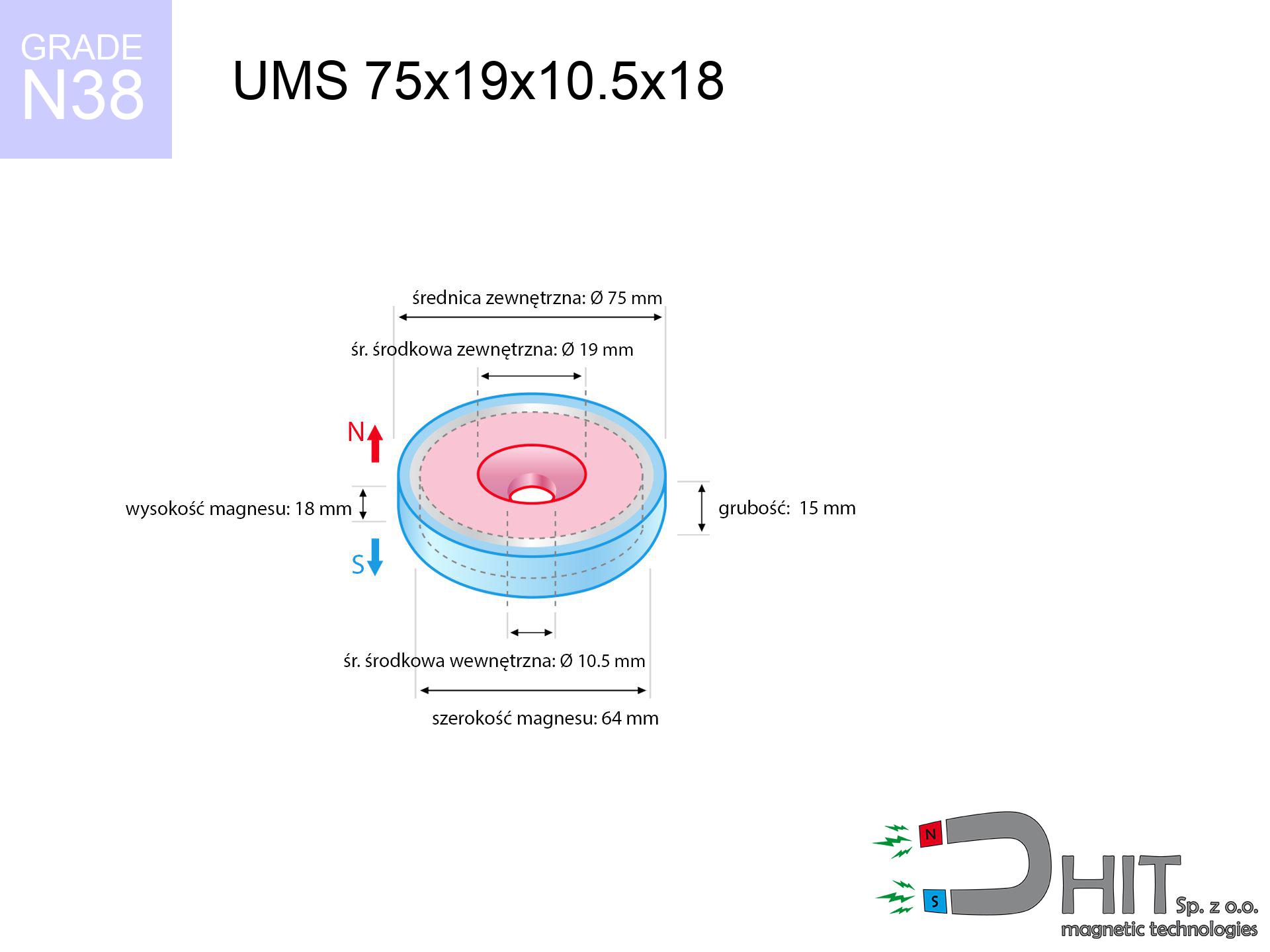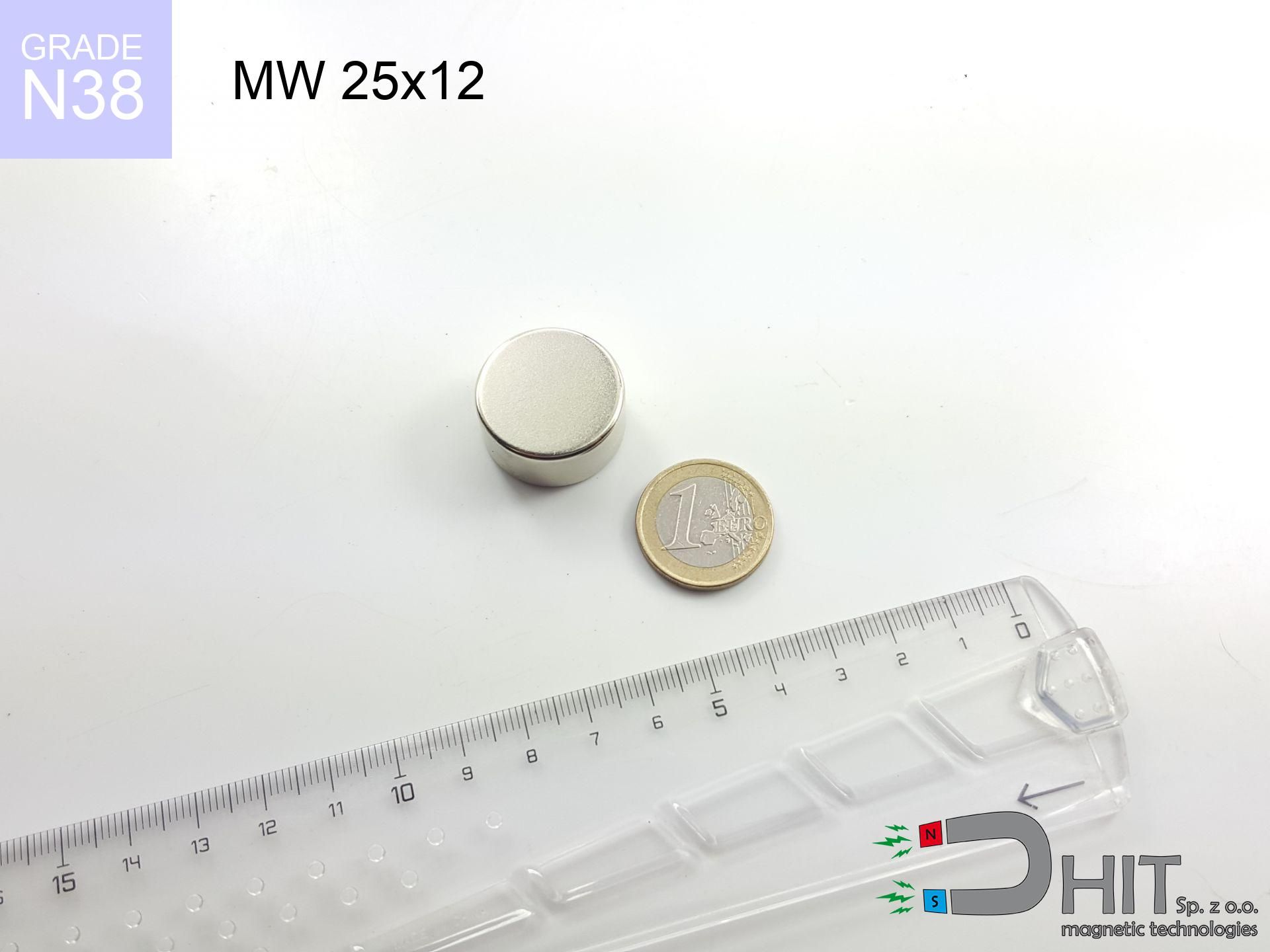MP 20x8x5 / N38 - ring magnet
ring magnet
Catalog no 030188
GTIN: 5906301812050
Diameter [±0,1 mm]
20 mm
internal diameter Ø [±0,1 mm]
8 mm
Height [±0,1 mm]
5 mm
Weight
14.14 g
Magnetization Direction
↑ axial
Load capacity
2.28 kg / 22.36 N
Magnetic Induction
206.25 mT
Coating
[NiCuNi] nickel
3.44 ZŁ with VAT / pcs + price for transport
2.80 ZŁ net + 23% VAT / pcs
bulk discounts:
Need more?Want to negotiate the price?
Call us +48 22 499 98 98 or write via form on the contact page. Test the magnet's power with our power calculator.
Orders placed by 14:00 are shipped the same day.
MP 20x8x5 / N38 - ring magnet
Magnetic properties of material N38
Physical properties of NdFeB
Shopping tips
Advantages as well as disadvantages of neodymium magnets NdFeB.
In addition to immense power, neodymium magnets have the following advantages:
- They do not lose strength over time. After approximately 10 years, their strength decreases by only ~1% (theoretically),
- They are highly resistant to demagnetization by external magnetic sources,
- By applying a shiny coating of nickel, gold, or silver, the element gains an aesthetic appearance,
- They exhibit very high magnetic induction on the surface of the magnet,
- Thanks to their high temperature resistance, they can operate (depending on the form) even at temperatures up to 230°C and above...
- Thanks to the flexibility in shaping and the ability to adapt to specific requirements – neodymium magnets can be produced in a wide range of shapes and sizes, which expands the range of their possible uses.
- Significant importance in modern technologies – find application in hard drives, electric drive mechanisms, medical apparatus and other highly developed apparatuses.
Disadvantages of neodymium magnets:
- They are fragile when subjected to a powerful impact. If the magnets are exposed to impacts, we recommend using magnets in a steel housing. The steel housing in the form of a holder protects the magnet from impacts and at the same time increases its overall strength,
- They lose power at high temperatures. Most neodymium magnets experience permanent loss of strength when heated above 80°C (depending on the form and height). However, we also offer special magnets with high temperature resistance, up to 230°C,
- They rust in a humid environment - during outdoor use, we recommend using waterproof magnets, such as those made of rubber or plastic,
- The use of a cover or a magnetic holder is recommended due to the limited possibilities of manufacturing threads or complex shapes in the magnet
- Possible danger arising from small pieces of magnets pose a threat, when accidentally ingested, which is particularly important in the context of children's health. Additionally, small elements of these devices are able to be problematic in medical diagnosis after entering the body.
Handle Neodymium Magnets with Caution
Neodymium magnets can attract to each other, pinch the skin, and cause significant injuries.
Magnets will attract each other within a distance of several to about 10 cm from each other. Remember not to put fingers between magnets or alternatively in their path when attract. Depending on how massive the neodymium magnets are, they can lead to a cut or a fracture.
Neodymium magnets are the strongest magnets ever created, and their power can surprise you.
Familiarize yourself with our information to properly handle these magnets and avoid significant swellings to your body and prevent disruption to the magnets.
The magnet coating is made of nickel, so be cautious if you have an allergy.
Studies show a small percentage of people have allergies to certain metals, including nickel. An allergic reaction often manifests as skin redness and rash. If you have a nickel allergy, try wearing gloves or avoid direct contact with nickel-plated neodymium magnets.
Neodymium magnets can become demagnetized at high temperatures.
Although magnets have shown to retain their effectiveness up to 80°C or 175°F, this temperature may vary depending on the type of material, shape, and intended use of the magnet.
Under no circumstances should neodymium magnets be brought close to GPS and smartphones.
Intense magnetic fields generated by neodymium magnets interfere with compasses and magnetometers used in navigation, as well as internal compasses of smartphones and GPS devices.
You should keep neodymium magnets at a safe distance from the wallet, computer, and TV.
Magnetic fields generated by neodymium magnets can damage magnetic storage media such as floppy disks, credit cards, magnetic ID cards, cassette tapes, video tapes, or other similar devices. In addition, they can damage televisions, VCRs, computer monitors, and CRT displays. Avoid placing neodymium magnets in close proximity to electronic devices.
Do not give neodymium magnets to youngest children.
Remember that neodymium magnets are not toys. Do not allow children to play with them. Small magnets can pose a serious choking hazard. If multiple magnets are swallowed, they can attract to each other through the intestinal walls, causing severe injuries, and even death.
Neodymium magnets are highly susceptible to damage, resulting in their cracking.
Magnets made of neodymium are highly delicate, and by joining them in an uncontrolled manner, they will break. Neodymium magnets are made of metal and coated with a shiny nickel surface, but they are not as hard as steel. At the moment of collision between the magnets, small metal fragments can be dispersed in different directions.
People with pacemakers are advised to avoid neodymium magnets.
In the case of neodymium magnets, there is a strong magnetic field. As a result, it interferes with the operation of a heart pacemaker. However, if the magnetic field does not affect the device, it can damage its components or deactivate the device when it is in a magnetic field.
Dust and powder from neodymium magnets are flammable.
Avoid drilling or mechanical processing of neodymium magnets. Once crushed into fine powder or dust, this material becomes highly flammable.
Safety precautions!
Please read the article - What danger lies in neodymium magnets? You will learn how to handle them properly.









